And of early impressions of the new X1 Carbon 5th Generation (X1C5):
At 1.13kg, this is almost the lightest full-fledge laptop I’ve owned. I reckon the SP3/keyboard is even lighter still by about 100g though one might also argue that the SP3 is a tablet/hybrid rather than a full laptop. And the XPS13 weighs 1.29kg in comparison. The X1C5’s entire case is covered with soft-touch material that not only feels luxuriant to hold, it’s also finger-print and smudge resistant.
For those of us who care about these things: the top lid is fairly sturdy and resistant to pressure, though it shows the tinniest flex if you set your fingers to it. But the lids on the XPS13 and MacBooks are even more heavy duty and capable of double duty as a bludgeoning weapon!
I was concerned about the maximum brightness level of the X1C5’s display panel. My particular unit has a AU Optronics B140HAN03.1 panel installed (couldn’t find the specifications for exactly this model, but the closest appears to be this), which seems to be what everyone else is getting for this model. The panel is bright enough for indoor use, but its maximum brightness is clearly lower than what the XPS13 and SP3 can dish out. The Aftershock S17 has really shown that matte screens can put out visuals as gorgeous as glossy screens – but they need to be of sufficient nit brightness, and I feel the X1C5’s display is just not great in this respect.
I’ve always felt that the XPS13’s 3200×1800 pixel screen was way overkill – the resolution is just too fine for a small 13.3″ screen at native font sizes. The X1C5 panel is full-HD 1920×1080 pixels – which is a more suitable native resolution for me.
The X1C5 I configured doesn’t include a touchscreen. I barely used the XPS13′ touch features, so I’m not missing that too much.
The X1C5 supports a variety of i5 and i7 7th generation Kaby Lake processors. The i7 processors as installed on the X1’s seem to be getting mixed feedback; basically along the lines of marginally better performance in selected processor-intensive tasks compared to i5s but a lot more draining on the battery. These days, I no longer do programming or game engine work but crunch spreadsheets and data sets for analytics, so the i5 processor would have sufficed normally. Still – just to be safe, I selected the fastest i5 processor available at configuration – the i5 -7300U.
Lenovo keyboards are widely known to be among the best in their ranges, though some of their recent home consumer models have reduced the size of the right SHIFT key – a serious design sacrifice that has made touch and fast typists everywhere groan. Thankfully, the X1C5 uses a regular size R-SHIFT key – though like their ThinkPad enterprise models, the CTRL and FN keys are swapped around. I rate the X1C5 ‘s keyboard to be better than the XPS13 in feel, key spacing and key travel and on par with the old MacBooks before their implemented their stupid Butterfly keyboards in their current line-up.
The glass trackpad isn’t very large, but it offers an appropriate amount of friction though the MacBooks’ are still better in this regard. Nice to note too that it supports Windows Precision Touchpad, and the trackpoint’s buttons produce reassuringly soft click sounds when depressed.
I couldn’t lift the X1C5’s lid with just one hand without the laptop also lifting off its feet- the laptop is just too light for this single-handed feat. The same difficulty lies with the XPS13 too, and that laptop is slightly heavier.
The X1C5’s fingerprint scanner is useful, though as earlier feared, it’s not as responsive as the similar scanners on the Mi Max or Huawei Mate 9. I why the extremely fast sensor recognition on those phones have not made their way to laptops.
The X1’s display bezels are pretty slim, though not as crazy thin as the XPS13’s (see below picture for a comparison). On the hand, the X1’s Integrated Webcam is in the normal and correct placement: at the top bezel, and not at the bottom like the XPS13’s up-your-nostril Webcam.
The AC adapter with USB-C connector puts up 65W of power, and is also quite a bit larger than the XPS13’s more modest 45W but very portable power adapter. I’ll probably at some point look for a supplementary USB-C laptop AC adapter that’s hopefully smaller than the X1’s. The laptop charges up real fast using the 65W charger. I haven’t done a precise test yet, but it seems to take just 5-6 minutes to juice roughly 10% of battery. That’s crazy quick.
Like the XPS13, the X1C5 runs cool under normal load – which includes web browsing, video streaming, and office productivity for me. I haven’t put the machine through any kind of stress testing yet (might do that in the next post), but under such normal use, the X1C5 also runs dead quiet as the laptop fan isn’t running.
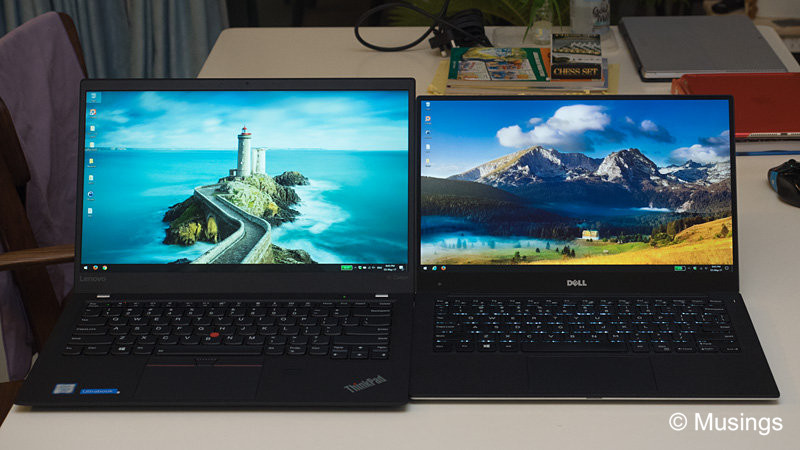
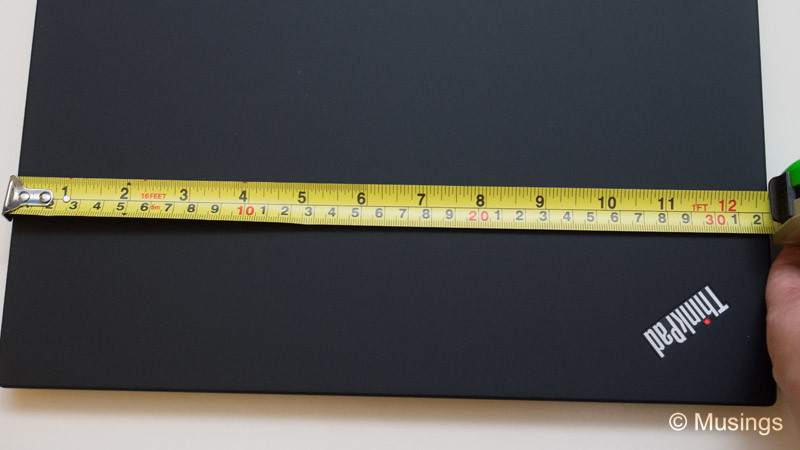
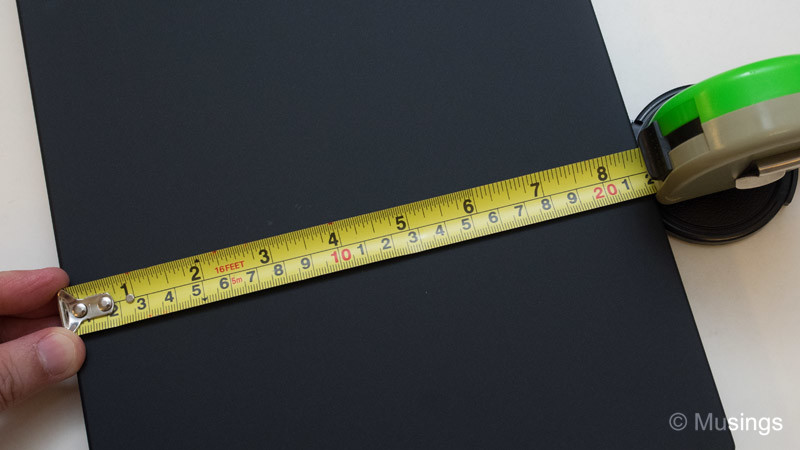
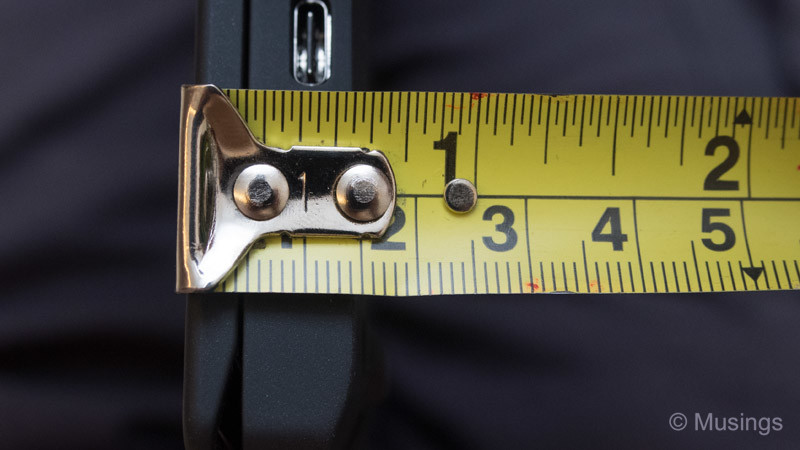
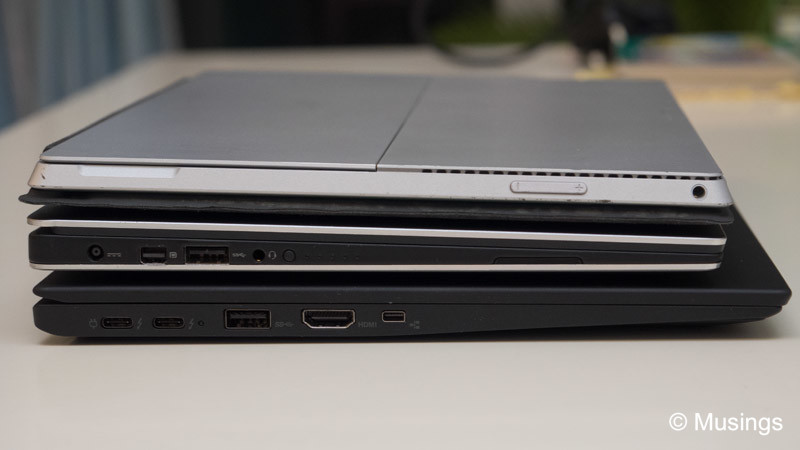
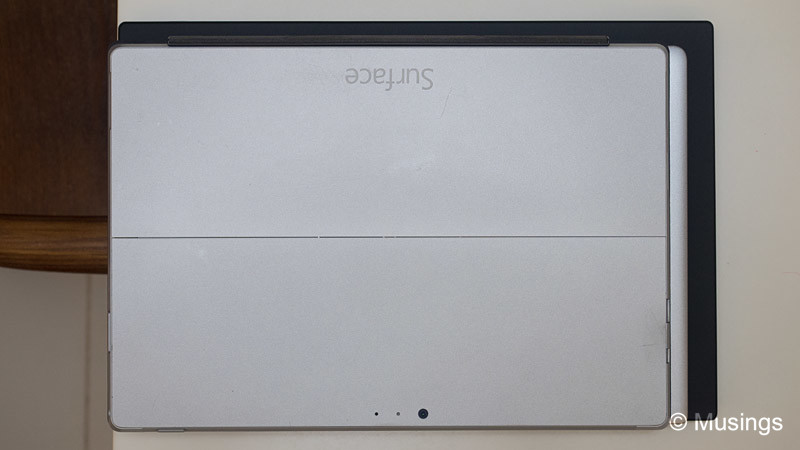
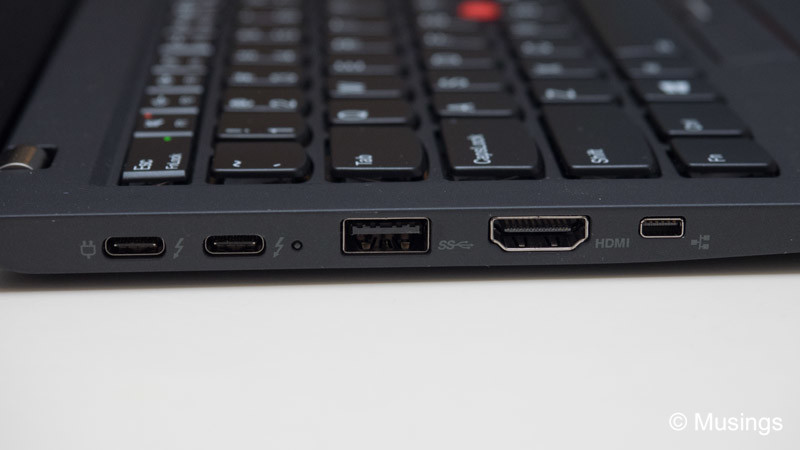
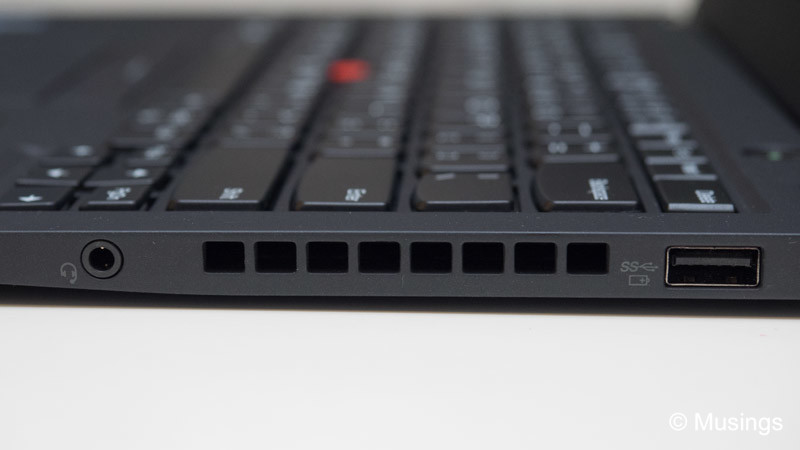
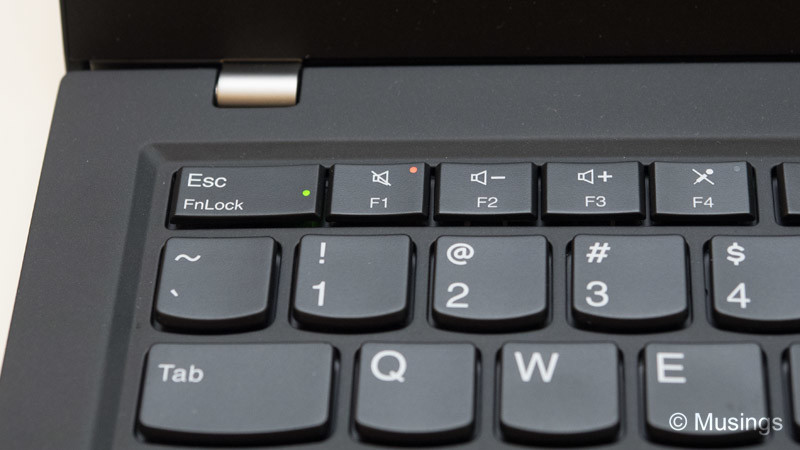
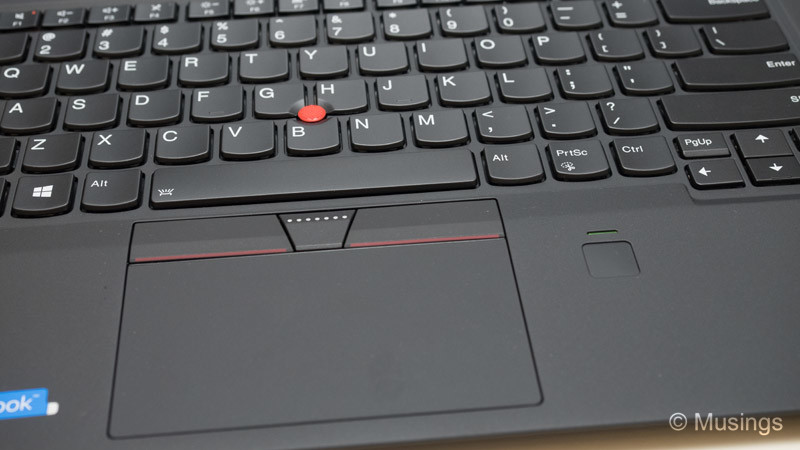
Hello! Congratulations on the purchase… LOL.
You do know that the Fn and Ctrl key can be swopped round by entering the BIOS and activating the option for that
Yep I have it normally on, and it can be enabled without getting into BIOS. It still takes some getting used to though, and it’s not helped by that the external keyboard I use at work when I’m not mobile uses the normal CTRL-FN arrangement. Muscle memory keeps working against me LOL.
Awesome review !! I am an unfortunate multitasker (a lot of browser windows – like 50 in tabs – open and running a photoshop and excel at the same time.. or so). How is heat and throttling/hanging up under load? And how is the fan noise? Last but not least, I pack badly and have always a lot of things together in my bag on the road: so imponderable how is the top lid/screen stability (like compared to the x1 yoga or elitebook x360 G2)? Thank you many for sharing your experience!!
Hey there. Unfortunately, I’ve not been able to put my X1 Carbon to stress testing – as it failed 5 days after delivery. And almost 3 weeks after that happened, the laptop repair case is still stuck in limbo and I’m still waiting for Lenovo to satisfactorily tell me how they are going to rectify this broken laptop.
The few days I used it; fan noise is inaudible in normal productivity tasks. The top lid is solid and resistant to pressure, though it’s not quite as hardened as the Dell XPS 13, MacBook Pros, or Asus Zenbooks.